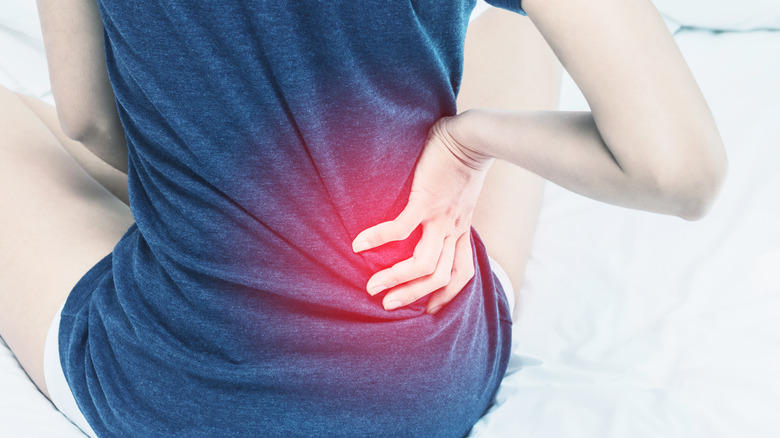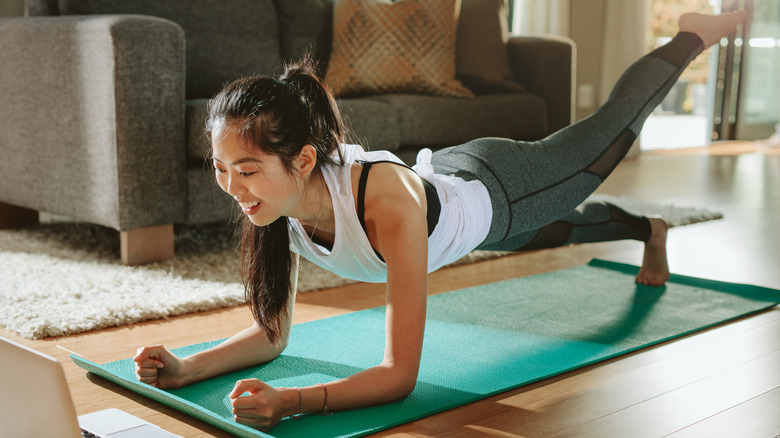Here's What It Means When Your Butt Falls Asleep
We all know that sitting around all day can be bad for your back and your general health, but did you know it can be bad for your butt, too? And not just bad for your butt because you're sitting on it all day — bad for your butt because it falls asleep. By falling asleep, it simply means the muscles aren't awake and they begin to weaken due to hours of sitting (via Today).
After nearly 18 months of COVID-19 restrictions, and people working from home in quarantine, plus a pretty dreary 2020/2021 winter, it's easy to forget to get your steps in, or even just wander around on your lunch break. But failing to activate your butt muscles can lead to further problems in the rest of your body too. Maybe you've already felt it happen before –- standing up after a few hours sitting down and you can feel a pain or numbness in your backside. Here's what it means when your butt falls asleep and what you can do about it.
Gluteal amnesia is what happens when your butt falls asleep
"Dead butt syndrome," also called gluteal amnesia, is what is happening when you feel your butt "fall asleep." It doesn't sit there and close its eyes ready for a nap, of course, but if your glutes haven't been activated in a few hours, they can start to become desensitized and weaken over time. This leads to your butt being less easily "activated," meaning it won't be able to force much power from the muscle when you actually do want it to work (via Self).
According to physical therapist Chris Kolba, the issue of gluteal amnesia is mainly down to one –- or technically two -– things: the hip flexors (via Self). Whilst your butt muscles (glutes) lengthen when you're sitting down, your hip flexors tighten, "which leads to the butt muscles not firing or working as optimally as they should," Kolba told Self.
When your gluteal muscles tighten and lose strength, the rest of your body compensates for the extra work, setting you up for issues such as lower back, hip, or knee pain.
Dead butt syndrome is reversible
The good news for us sedentary folk is that gluteal amnesia, or "dead butt syndrome," is reversible — but be prepared to work your butt off. Even if your butt is in good shape, working to strengthen the gluteal muscles can help you avoid dead butt syndrome in the future (via Men's Health). Plus, bringing these muscles "back to life" will help a great deal for those lower body gains.
Glute bridges are one of the best leg exercises to target each area of the gluteal muscles, celebrity trainer Kira Stokes told Self. Squats are also a great way to fire up the glutes (via Today). Level up your workout routine by adding glute-targeting moves after cardio workouts, which include jogging, running, biking, and aerobics. Good moves to try: bird dogs, clamshells, donkey kicks, and planks, says Stokes. These post-cardio moves will help to prevent dead butt syndrome in the future and keep those glutes fired up.


